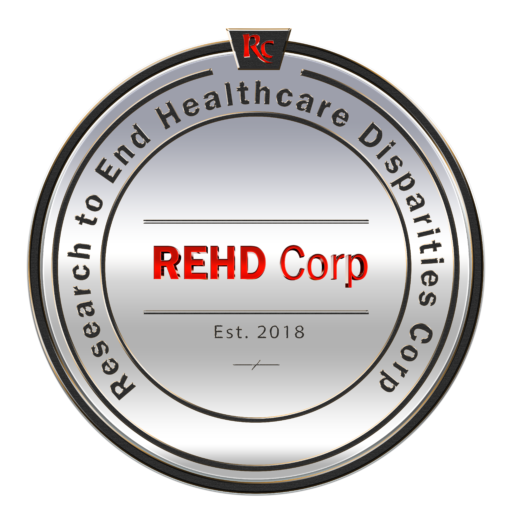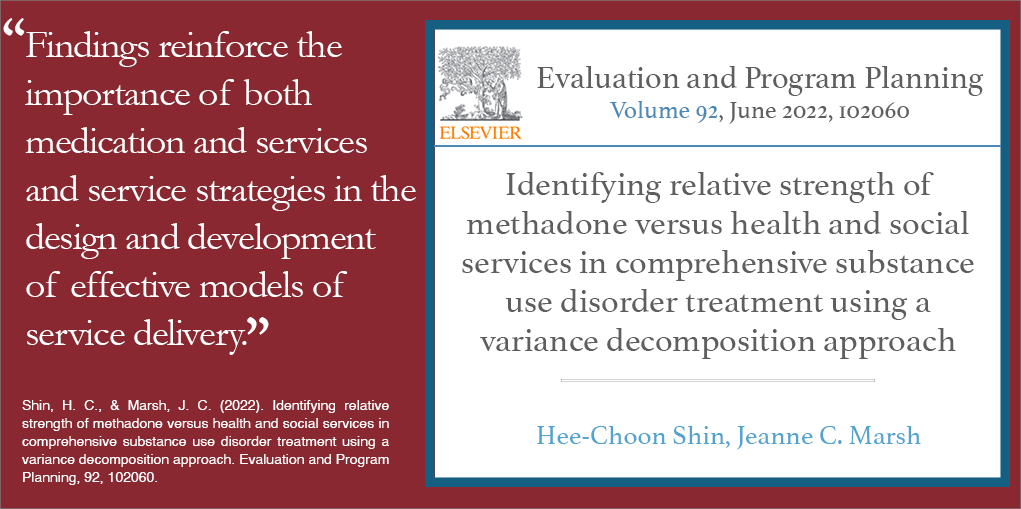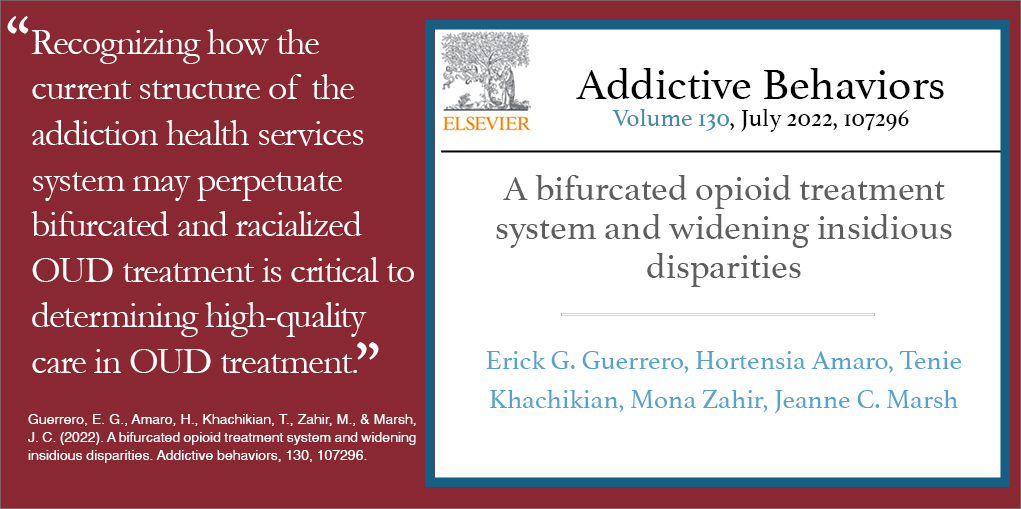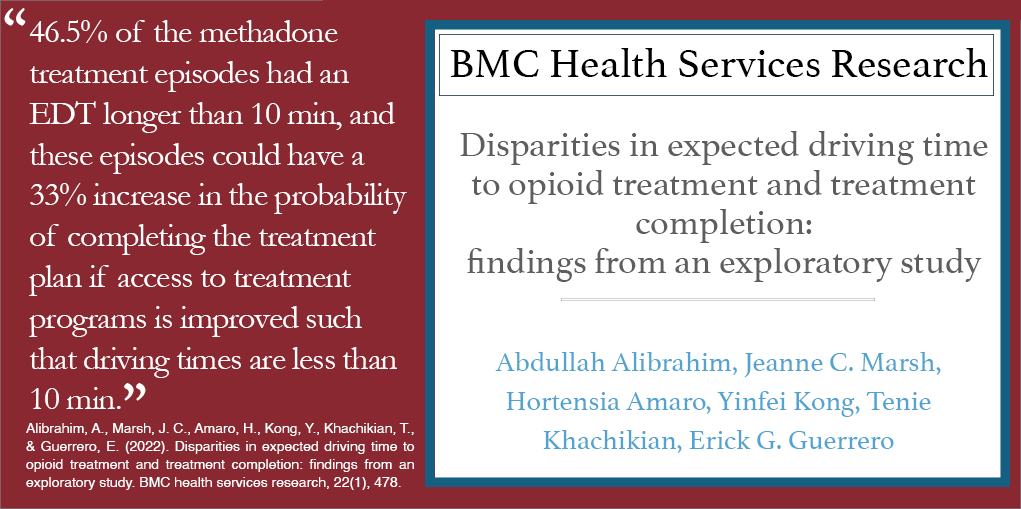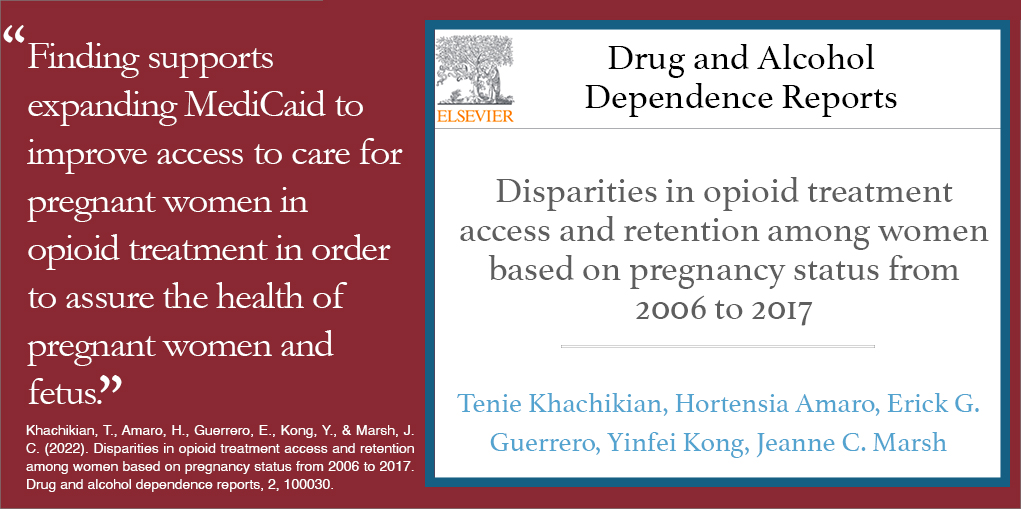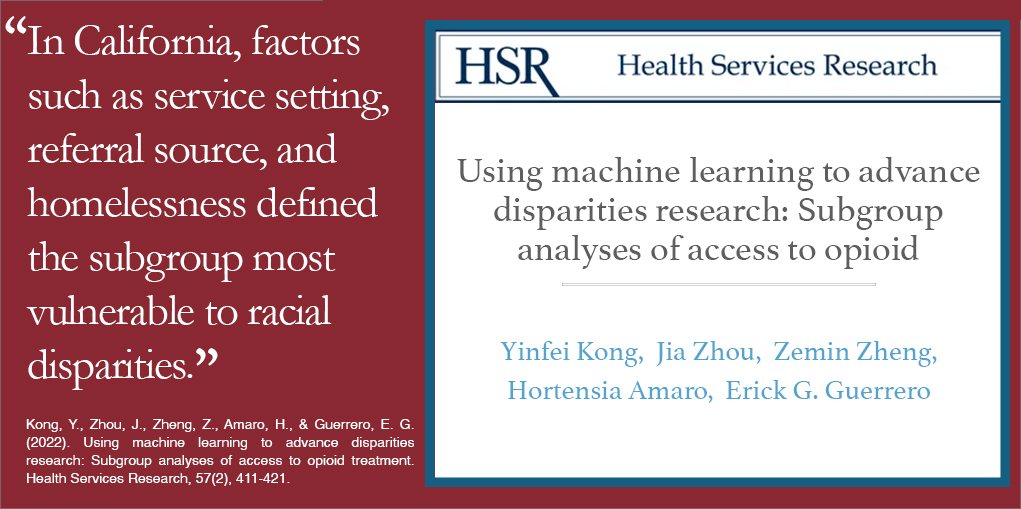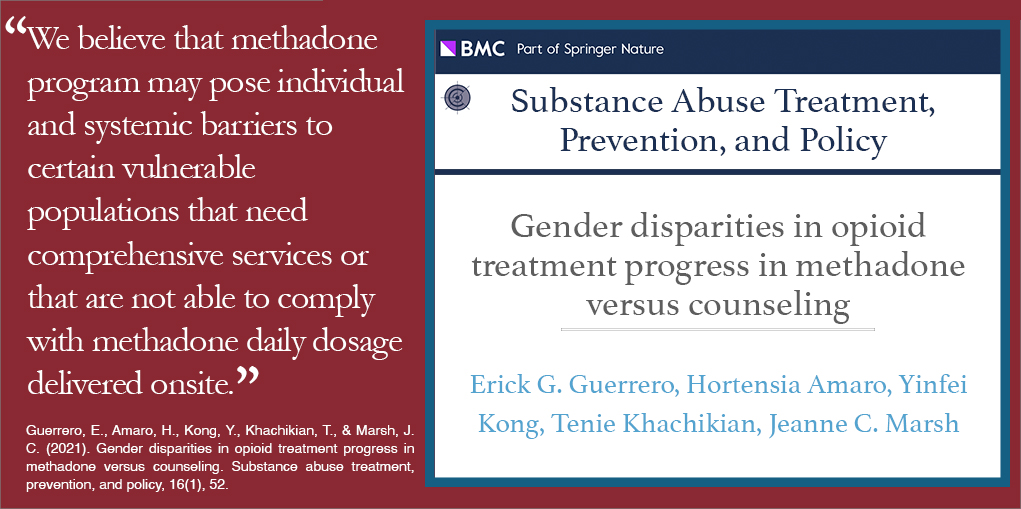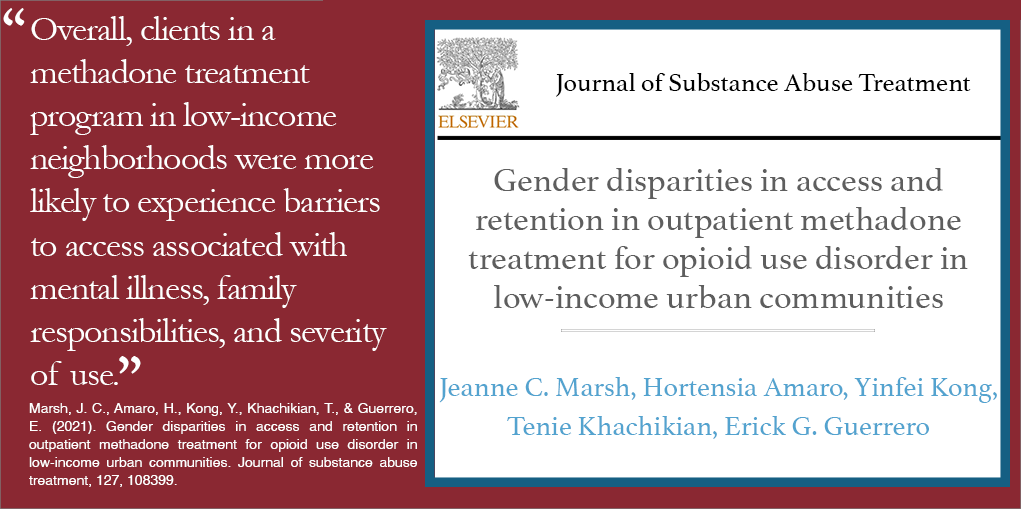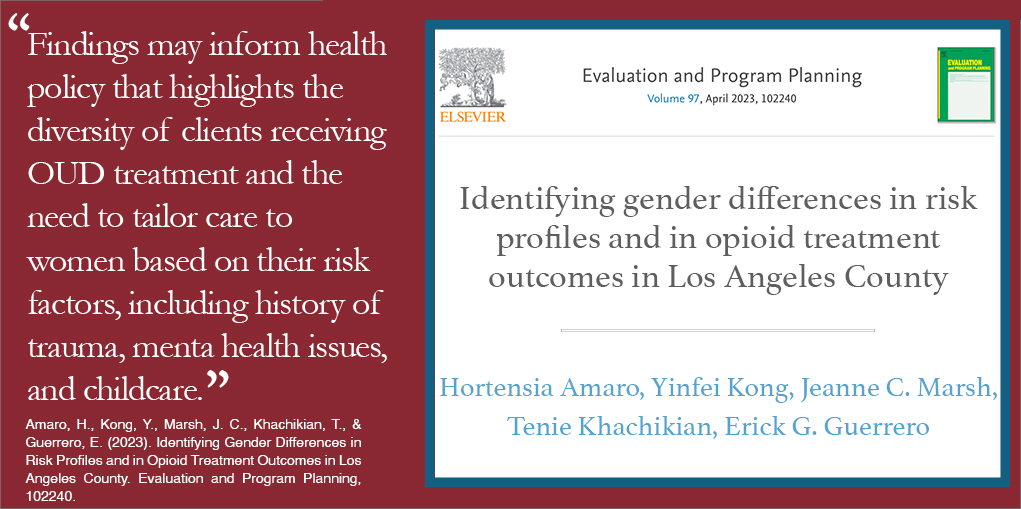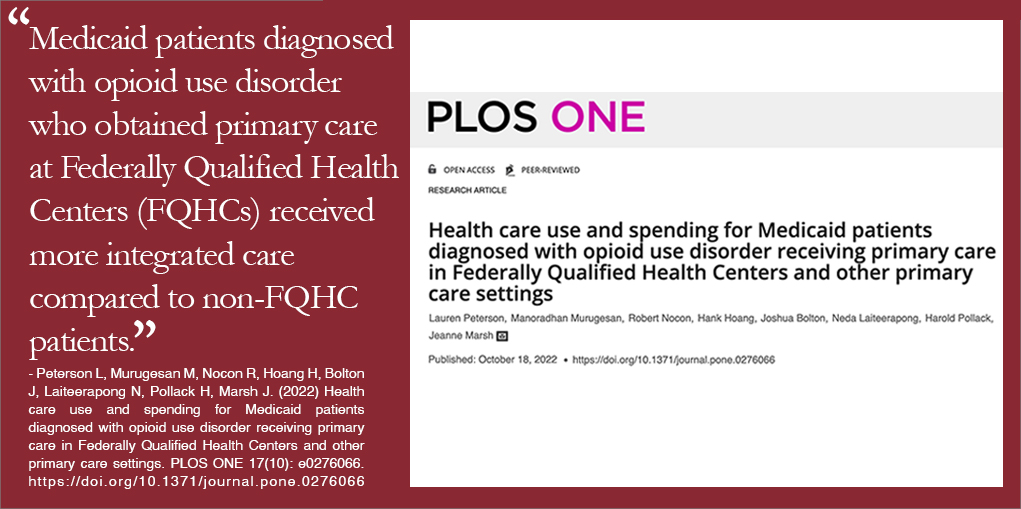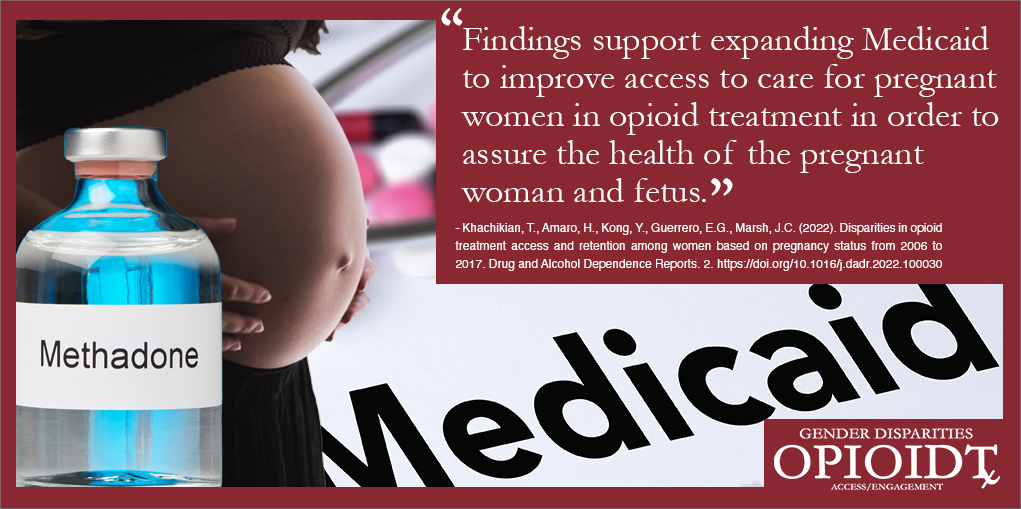How Travel Distance Affects Spanish-speaking Clients’ Access to Outpatient SUD Treatment Services
Greater accessibility to outpatient substance use disorder (SUD) treatment can greatly assist those struggling with substance abuse issues despite existing treatment barriers such as insurance coverage, racial/ethnic discrimination, culturally responsive care. Latinos residing within low-income communities within the United States often have more access to illegal substances and alcohol with limited access to Spanish-language behavioral health services. Though 66 percent of Los Angeles County treatment facilities offer services in Spanish, it is unknown whether these facilities are strategically located in the most essential areas. In a study published in the International Journal of Drug Policy, Dr. Erick Guerrero and a team of researchers ventured to garner more answers using geographic information systems (GIS) within L.A. County’s high-density Latino populations.
According to the study, “L.A. County has one of the largest publicly funded SUD treatment systems in the nation, providing services to one of the most ethnically diverse populations nationwide.” Of the specified population, about 42 percent self-identify as Latino and 75 percent of the aforementioned group self-identify as Mexican-American or Mexican. According to the study, Latinos assisted by California publicly funded treatment facilities have the highest use of alcohol and methamphetamine and “Latinos of Mexican descent generally report the highest rates of alcohol binging in national samples.” In 2009, the U.S. Census Bureau reported that L.A. County had the largest concentration of Latinos in the United States (~4.7 million). Though much of this population is bilingual (English/Spanish), the census data suggests “up to 83% of Latinos in L.A. County speak Spanish at home and 41% report limited English proficiency.”
A clear disparity exists between need and access to SUD treatment services for ethnic minorities. For example, Latinos are far more likely to receive less than suitable services as well as delays in SUD treatment access, which in turn, leads to decreased client satisfaction. Further, Latinos experience increased levels of SUD treatment attrition due to limited availability of bilingual treatment services, in comparison with other racial/ethnic groups.
While previous studies have utilized GIS to examine the relationship between treatment access and distance as well as the distribution of treatment centers, limited studies have focused on how distance can act as an obstacle in gaining access to SUD treatment services, particularly within the Latino community. A 2010 study conducted by Perron et al. found that “less than 5 percent of California’s urban areas are underserved in terms of having readily accessible substance abuse treatment services,” but their research also pointed to regional variability that required more community-level analysis. A 2011 study by Guerrero and researchers further suggested that distance can impact clients’ treatment service utilization. Previous studies also linked clients’ increased travel time to SUD treatment providers with fewer client visits and less effective care. Likewise, distance is strongly tied to treatment completion and increased retention rates, particularly for clients who traveled less than one mile to treatment. This is particularly important because Latinos and low-income persons report higher rates of barriers related to treatment access, such as communication and/or transportation issues.
Data from the National Survey of Substance Abuse Treatment Services and the 2010 Census were evaluated using GIS to determine the “street-level distance between treatment facilities with services in Spanish and Latino communities throughout L.A. County.” In a two-phase approach using a street network-based analysis and spatial autocorrelation, the research team calculated “the distance from each census tract to the closest Spanish-language treatment” and identified “significant clusters of census tracts with both large concentrations of Latinos and farther distances to treatment facilities,” respectively.
The final study analysis was comprised of 191 outpatient treatment facilities, which included facilities that: (1) was primarily a SUD treatment facility (excluding all general or mental health facilities);
(2) provided mainly outpatient treatment services, which refers to services rendered at a facility and consisting of individual, group, and/or family sessions, usually for an hour to 90 min once to three times a week; and (3) provided services in Spanish through a bilingual counselor.
Within the 2,334 census tracts used in the study, Latinos made up 46 percent of the county with 23 percent of that group residing in southeast Los Angeles, the San Fernando Valley and the San Gabriel Valley. Five hot spots were designated in the following areas: “northwest Los Angeles and San Fernando (hot spot A); central Los Angeles and East Los Angeles (B); San Gabriel Valley, including the cities of South El Monte, Baldwin Park, and Irwindale (C); Pomona (D); and Santa Fe Springs (E).” Latinos made up 82 percent of the total population within the hot spots in 2010. Study results revealed the following:
- Within the San Gabriel Valley (an area with an 82 percent Latino population), facilities offering services in Spanish were 2.93 miles away and 0.65 miles farther than the county average.
- In hot spot C (an area with a population of at least 85 percent Latinos in 11 tracts of the area’s 24 total census tracts, including two tracts with at least 90 percent of the population identifying as Latino) the distance to the closest treatment facility varied within the hot spot, ranging from a minimum distance of 2.36 miles to a maximum of 4.19 miles.
- In eight tracts largely located in Irwindale, Baldwin Park and Avocado Heights, the distance to the closest facility was more than 3 miles; one tract had a distance of more than 4 miles.
Overall, the study highlighted two important findings: (1) several distinct hot spots were identified as well as areas where closer Spanish-language outpatient SUD treatment services could be established to increase client treatment attendance, engagement and completion rates; and (2) none of the identified L.A. County hot spots in the study are within the one-mile distance threshold that aids in access to treatment. The study’s data, methods and results can inform the delineation of community boundaries within diverse settings using GIS, assist in effective urban planning for communities with large populations of ethnic minorities (particularly those in need of “linguistically responsive social services”) and the findings further the discussion of U.S. health care legislation, health care access for underserved, low-income communities and drug policy.
To view the study in its entirety, please click here.
Source: “Travel distance to outpatient substance use disorder treatment facilities for Spanish-speaking clients”, International Journal of Drug Policy
